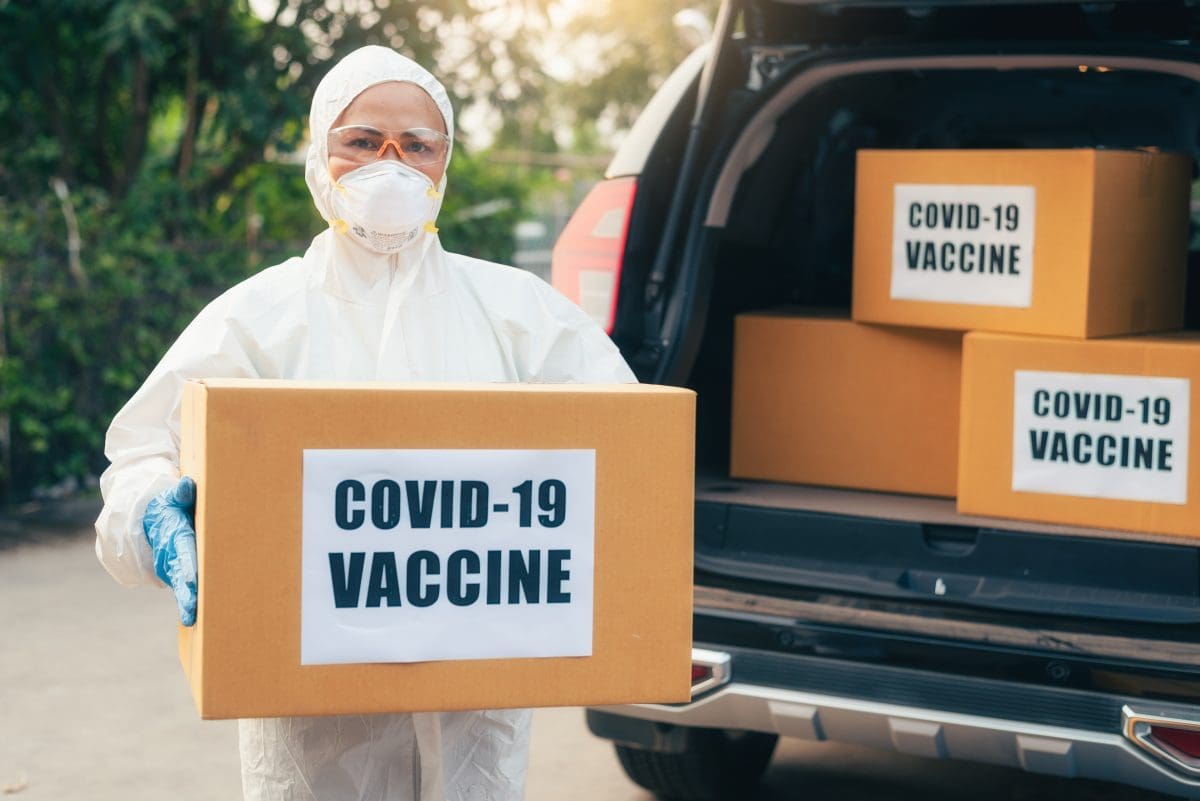
On November 9th, 2020 Pfizer and BioNTech announced a vaccine candidate that was over 90% effective in trials (Pfizer). Shortly after, Moderna and others announced successful vaccine trials as well. With this news creating light at the end of the proverbial tunnel of COVID-19, all eyes have turned to the last mile delivery of the vaccine. This distribution of the COVID-19 vaccine will require extensive planning. There are many logistical challenges that will be faced as the vaccine enters the last mile, such as temperature control and labor demand issues. There will also be many preparations to increase efficiency and adapt to any abrupt changes.
The United States is about to begin an operation that will test the last mile’s resources and capabilities. The US has already purchased 100 million doses of the COVID-19 vaccine from Pfizer (WSJ). The distribution of the vaccines through the last mile will face the difficulty of temperature control for the carrying cases. Vaccines from different companies have different temperature storage requirements. This poses a large difficulty for the last mile, as the transportation vehicles have to ensure that these requirements are met and do not fall outside of the temperature parameters. The last mile also has to discern possible ways to equip transport vehicles to be able to operate at multiple different temperatures depending on which vaccine it is transporting. Current refrigerator trailers may be in short supply and also may not be able to reach the low-temperature levels needed for the storage and transportation of COVID-19 vaccines.
A second difficulty that the last mile must prepare for is the issue of labor demand. The COVID-19 distribution effort will encompass every area of the United States. The demand for delivery drivers will be beyond what can normally be supplied for an extended time. The last mile will have to adapt to this issue by utilizing current routes of delivery, courier services, and even outsource to third party delivery channels.
The last mile can prepare for the COVID-19 vaccine by preparing routes to optimize efficiency. In all likelihood, the CDC and other government agencies will have determined the locations where the distribution process begins. Utilizing route planning software can ensure that the vaccine deliveries occur at the most efficient speed, which will also help with the temperature control difficulties that may be faced. The shorter amount of time that vaccines have to be in transit, the less time for an issue to arise. Maximized efficiency of routes means that drivers can deliver to more locations and have a higher ceiling of daily deliveries. This will help ease the burden of driver demand.
Finally, the last mile can begin to prepare for any abrupt changes to the predetermined plan. The COVID-19 vaccine process has been progressing extremely quickly, and with this fast-tracked progress, there is always an opportunity for plans to change quickly or become obsolete. The last mile can be prepared for these abrupt changes by having contingency plans in case of likely changes, and it’s necessary to remain flexible and open-minded as the plans turn to fruition.







